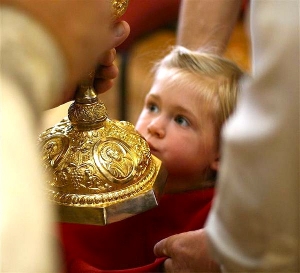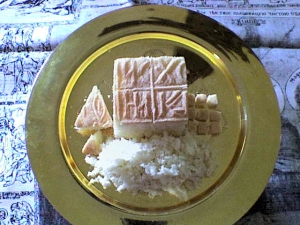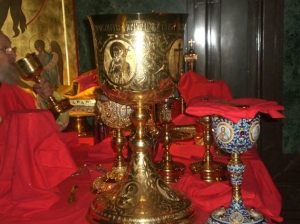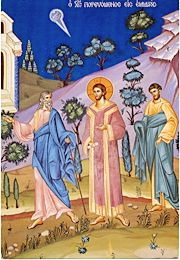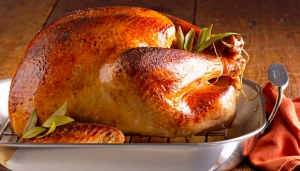Author: Fr. George
Traveling to Bethlehem (26 November 2010)
** the next few posts are taken from a Homily given: Nov. 28, 2010 In the Name of the Father the Son and the Holy Spirit….. So they drew near to the village to which they were going. He appeared to be going further, but they constrained him, saying, “Stay with us, for it is toward evening and the day is now far spent.” So he went in to stay with them. When he was at table with them, he took the bread and blessed, and broke it, and gave it to them. And their eyes were opened and they recognised him; and he vanished out of their sight. They said to each other, “Did not our hearts burn within us while he talked to us on the road, while he opened to us the scriptures?” Luke 24, 28 – 32. This quote was taken from this morning’s Eothinon Gospel, the 5th. Dawn Gospel which was the reading in the Orthros (Matins) service. I thought to myself what an interesting coincidence that on the week of Thanksgiving, we should be hearing of Christ sitting down to eat with some of his disciples. We even read what was on the menu – bread. Our own tables last Thursday were so different, all of us had such abundance. No doubt, at most Thanksgiving Tables, there were the traditional foods: turkey, dressing, potatoes, cranberry and all types of pies. We in North America, the US and Canada, are the only countries which officially celebrate Thanksgiving. But, let’s look at our customs. Thanksgiving tables in our homes do have similarities. We gather as families or with a few close invited friends. The people we invite are like ourselves and they are carefully selected. Each Thanksgiving table is surrounded by the familiar: familiar foods and familiar people. This is the comfort of the holiday, the fact that we can be with the people close to us. But there is another Thanksgiving Table, one older than the table by which we remember the Pilgrims. It is the table, we gather around each time this family comes to give thanks. This table is open to all races, nationalities and peoples. It too is surrounded by a group of chosen friends, chosen by Christ to share in His bounty, His love and His life. Let’s examine the word’s St. John Chrysostomos uses to focus on the Gifts brought for God’s Holy Spirit bless and sanctify: “Thine Own of Thine Own in all and for all” This centres all of us on what? A piece of Bread? A Cup of Wine? Not these things, but the ultimate Thanksgiving, the body and blood of the lamb of God.]]>
Traveling to Bethlehem (25 November 2010)
Traveling to Bethlehem (24 November 2010)
I can’t tell you how perplexed I have been by all the “hoorah” concerning the “Dancing With The Stars.” You know it doesn”t make sense. Don’t we have anything better to think about? I will say it did remind me of one of my favourite Christian songs.
“I danced in the morning when the world begun. And I danced in the moon and the stars and the sun.
And I came down from heaven and I danced on earth.
At Bethlehem I had My birth.
Dance then wherever you may be….
I am the Lord of the Dance said He:
And I’ll lead you all, wherever you may be; And I’ll lead you all in the dance said He.”
LORD OF THE DANCE
This is the star we should all dance with. The star leads us all to a manger and there is the leader of the greatest dance, the dance from Bethlehem to our salvation. The Lord of the Dance is ultimately the Lord of All. ]]>
